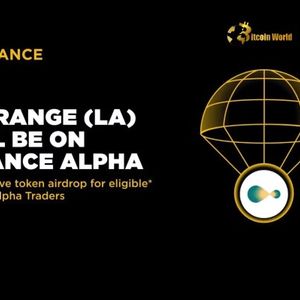BitcoinWorld DEXs Achieve Remarkable 25% Crypto Market Share in May Are you tracking the shifts happening in the world of cryptocurrency trading? There’s big news that highlights a significant trend: decentralized exchanges (DEXs) have just hit a major milestone. In May, these platforms captured a record 25% of the global spot trading volume, signaling a notable evolution in the crypto market share landscape. Decentralized Exchanges Reach a Historic 25% Market Share May 2024 proved to be a landmark month for decentralized exchanges . According to recent data from The Block, DEXs collectively accounted for a quarter of all spot trading activity worldwide. This isn’t just a number; it’s the highest share recorded to date, demonstrating growing confidence and activity on decentralized platforms. The total crypto trading volume facilitated by DEXs in May alone reached an impressive $410.2 billion. This surge reflects more than just increased activity; it points to a fundamental shift in how users prefer to trade digital assets. Moving from traditional, centralized models to code-driven, decentralized alternatives is gaining momentum. Who Led the Charge in DEX Crypto Trading Volume? While the overall figure is substantial, certain platforms stood out in driving this record crypto trading volume . The competition among DEXs is intense, but a few key players dominated the scene in May: PancakeSwap: This Binance Smart Chain (BNB Chain) powerhouse led the pack by a significant margin, recording a staggering $171.6 billion in volume. PancakeSwap’s popularity, often linked to its user-friendly interface and diverse offerings, clearly resonates with a large segment of the market. Aerodrome: A notable contender, Aerodrome posted nearly $15 billion in trading volume. PumpSwap: Also demonstrating strong performance, PumpSwap matched Aerodrome with close to $15 billion in volume for the month. These figures highlight the diverse ecosystems and chains where DEX activity is thriving, with different platforms catering to various user needs and preferences. Why the Growing Preference for Decentralized Exchanges? The shift in crypto market share towards DEXs isn’t happening in a vacuum. Several factors contribute to their increasing appeal: Control Over Assets: Perhaps the most significant advantage is that users retain control of their private keys and assets. Unlike centralized exchanges (CEXs), funds are not held by a third party, mitigating risks associated with exchange hacks or insolvency. Transparency: Transactions on decentralized exchanges occur on public blockchains, offering a high degree of transparency regarding trading activity and liquidity. Wider Token Availability: DEXs often list new and smaller altcoins much sooner than CEXs, providing traders access to emerging projects. Censorship Resistance: Operating on decentralized networks makes DEXs less susceptible to single points of control or censorship. This move aligns with the core ethos of cryptocurrency – decentralization and financial sovereignty. What Does This Mean for the Future of Crypto Market Share? Industry leaders are taking note of this trend. Simon Kim, CEO of Hashed, a prominent crypto venture fund, views this shift as a move away from centralized, trust-based systems towards decentralized, code-driven trading models. His outlook is particularly bullish for decentralized exchanges . Kim has made a bold forecast: he predicts that DEXs will surpass centralized exchanges in total trading volume by 2028. Furthermore, he anticipates that DEXs will become the leading model for cryptocurrency trading by 2030. While ambitious, this prediction underscores the significant potential seen in decentralized infrastructure and its ability to capture a larger crypto market share in the coming years. Are There Challenges When Using Decentralized Exchanges? Despite the rapid growth and benefits, it’s important to acknowledge that using decentralized exchanges comes with its own set of challenges: Complexity: For newcomers, interacting with Web3 wallets, understanding gas fees, and managing private keys can be more complex than using a centralized platform. Gas Fees: Trading on some popular blockchain networks (like Ethereum mainnet) can involve high transaction fees (gas fees), especially during periods of network congestion. Slippage: On Automated Market Maker (AMM) DEXs, large trades can sometimes experience significant price slippage, impacting the final execution price. Smart Contract Risk: While code-driven, DEXs rely on smart contracts, which can potentially have vulnerabilities if not properly audited. Understanding these challenges is crucial for anyone looking to trade on DEXs. The Bottom Line: DEXs Are Reshaping Crypto Trading Volume The record 25% crypto market share achieved by decentralized exchanges in May is a powerful indicator of their increasing prominence. Driven by platforms like PancakeSwap and fueled by user demand for greater control and transparency, DEXs are no longer a niche alternative but a significant force in the market. While challenges remain, the trajectory suggests that decentralized trading is poised to play an even larger role in the future of the crypto market share , potentially fulfilling the predictions of industry experts and reshaping the landscape of crypto trading volume for years to come. To learn more about the latest crypto market trends, explore our article on key developments shaping crypto trading volume and institutional adoption. This post DEXs Achieve Remarkable 25% Crypto Market Share in May first appeared on BitcoinWorld and is written by Editorial Team















